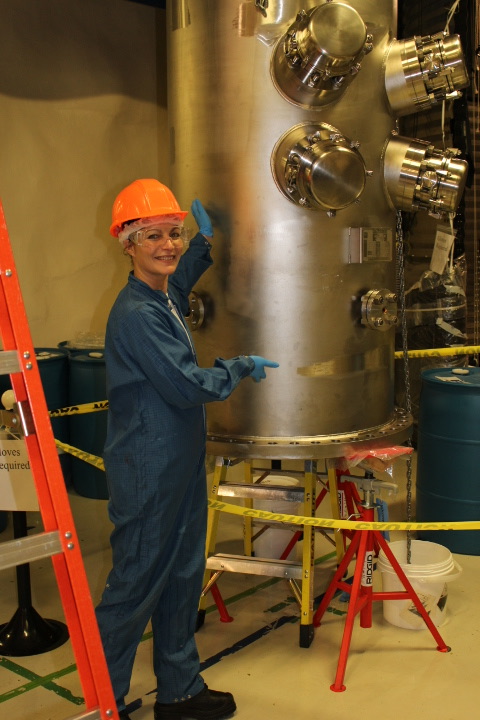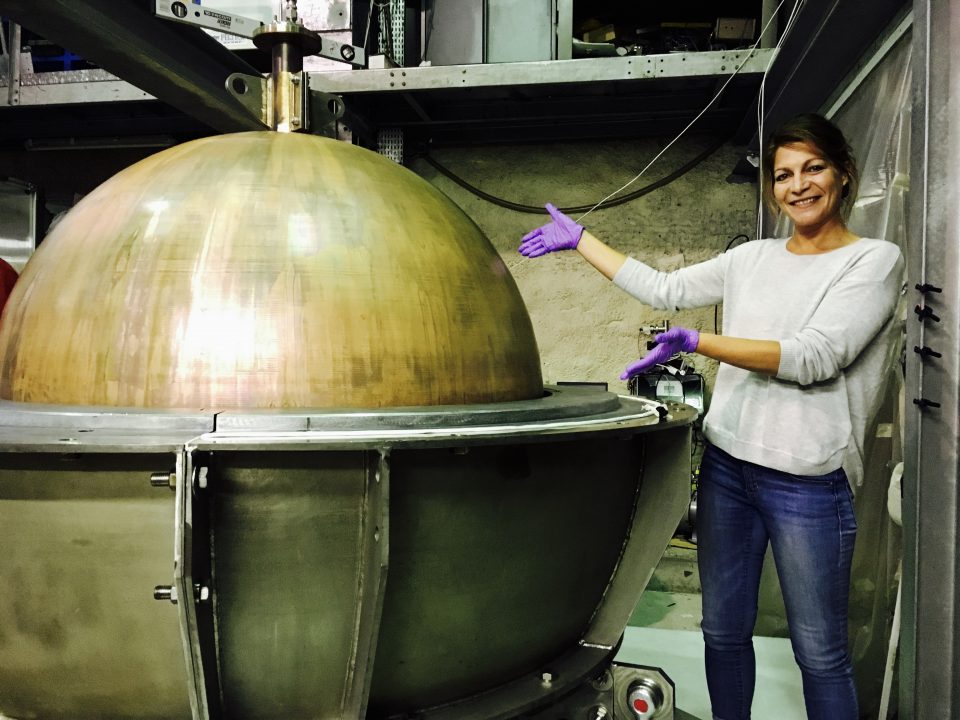Marie-Cécile Elise Piro
University of Alberta
Assistant Professor - Physics
After completing her PhD at the Université de Montréal, Marie-Cécile undertook a postdoctoral fellowship in France and worked as a Research Associate in the US and Italy before joining the University of Alberta as part of the McDonald Institute.
Part of both the PICO and DEAP-3600 collaborations, Marie-Cécile’s current work focuses on the hunt for dark matter. With PICO, she is working on gas purification and reducing the background radiation levels of materials used in the detector, which will allow PICO to achieve unprecedented levels of sensitivity. With DEAP-3600, she is doing measurements to better understand the detector’s behaviour, and, in turn, what the signals coming from the detector mean. She is also part of the NEWS-G collaboration working on the radon mitigation and analysis for the future installation at SNOLAB in the fall 2019.
One of the things Marie-Cécile most enjoys is solving the ‘mystery events’ that come up in data analysis for these types of experiments. Over her career, she has done this type of problem solving for many different types of detectors and is excited to continue doing this work as part of the McDonald Institute.
Contact Information
Room 2-091 Centennial Centre for Interdisciplinary Science
University of Alberta
Edmonton, AB, T6G 2R3
Phone: 780-492-1074
Email: mariecci@ualberta.ca

Bio
Dr. Piro is a french-italo-canadian who grew up in a tiny french island in the Caribbean the Guadeloupe. She moved in Montreal for her undergraduate and graduate studies at Université de Montréal in Québec, Canada and received her PhD in 2012 in experimental particle physics in the PICASSO collaboration using superheated liquid detectors for the search of dark matter. She continued her quest of dark matter as a postdoctoral associate in France within the EDELWEISS group working with High Purity Germanium (HPGe) bolometer. She moved in US to work as a research associate with the XENON1T experiment and spent two years in Gran Sasso in Italy for the complete commissioning of the detector, as expert on-site of the purification system for the experiment. Dr. Piro is now a faculty member at University of Alberta since 2017 and she continue her search for dark matter with several experiments as a leader in gas purification to reduce the background level of the detectors and data analysis to understand the behavior of the detectors. Combining technologies for developing new detectors and extract the interesting signals in order to solve the mysteries of the Universe is her main interest.
Q&A with Prof. Piro
How would you describe your work at the most basic level?
I try to understand what our universe is made of. How do all the things around us work? Space, the big bang, and the stars are so fascinating. To answer these questions, we build ultra-sensitive detectors and install them in underground laboratories (mines, mountains, tunnels) all over the world.
Why did you choose physics?
I chose physics because when I was young I wanted to be an astronaut. I remember wanting to be on the first mission to Mars, even if it was a one-way trip. It’s still a dream I have, and physics was a good way to learn more about our universe.
What’s something about you that others may not know?
I am an artist (singer, writer, painter) I almost went into a career of singing with professionals but decided to stay in Physics!
What are some of your other passions?
I love archeology because it is so fascinating trying to understand the mystery and puzzles of the history of different cultures. I chose physics instead, but in a certain way for me a physicist is like an archeologist trying to understand the mysteries of our Universe.

